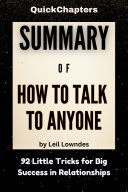Staying in Sync Without Stirring up Sting
“Content must solve problems, answer questions, or entertain. You are not selling with content, you are building relationships,” the Core dna team advises. “Think about what your audience needs to figure out or decide, then build a tool around it.”
Yet, with such a culturally divided society, “advertisers may be asking themselves how they should show up in a society that’s culturally divided,” the current.com says. While it’s important to stay relevant, recognizing community, national, and even worldwide events and trends that are at the forefront of readers’ minds, the question is how to create content that “connects with reality” without being “political”.
While marketers might choose to offer a respite from politics by promoting feel-good stories and product updates, as Okeeffe PR suggests, one of the most common – and most effective – ways to get consistent hits on your blog is to tie your content to current events,” Ray Access points out. In fact, the practical SEO-related suggestion Access offers to us content writers is to get in the habit of scanning headlines of a daily news site so as to use “newsworthy keywords” in our own content.
Aside from SEO tactics, at Say it For You, what we’ve learned over the years is that a huge part of engaging readers is reflecting and even directly alluding to current happenings and concerns in the community. People tend to be comfortable associating with professionals and business owners who “give back” and who actively participate in home town events and activities.
Consumers do want to buy from brands whose values match their own, Clare McKinley admits in basis.com, but this alignment does not have to be political, she points out. Values such as diversity, ambition, or work-life balance serve as a connecting factor. Hyper-personalization is the key in the long run, McKinley concludes. The population of eligible voters in content marketing (think “eligible buyers“), is made up of many smaller groups, each of which creates specific opportunities for messaging”.
Of course, no piece of content, no campaign, can be all things to all people. Each post or article must be targeted towards the specific type of customers you want and who are most likely to want to do business with you. And, as our world appears to be come ever more “political” and polarized, we content writers must work on “staying in sync” without “stirring up sting”!






Follow us online!